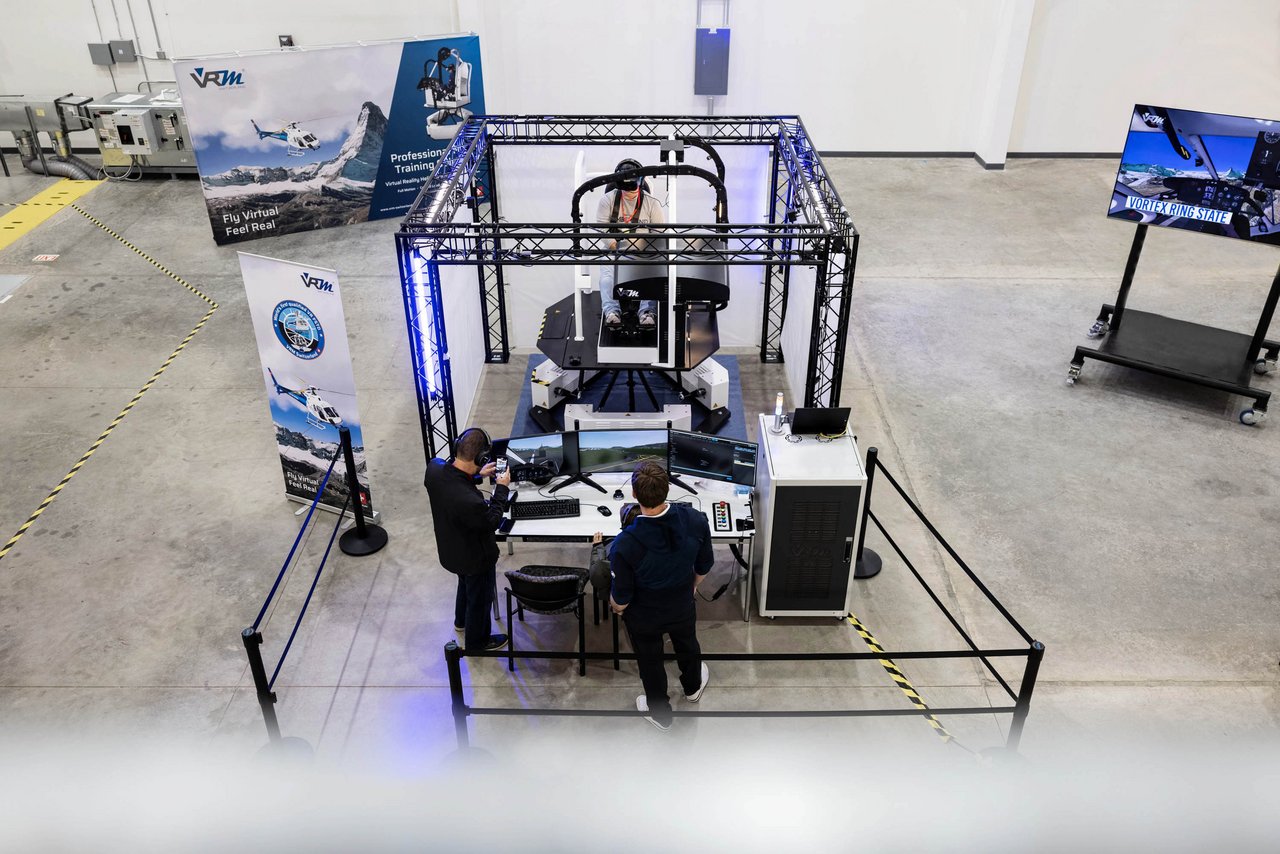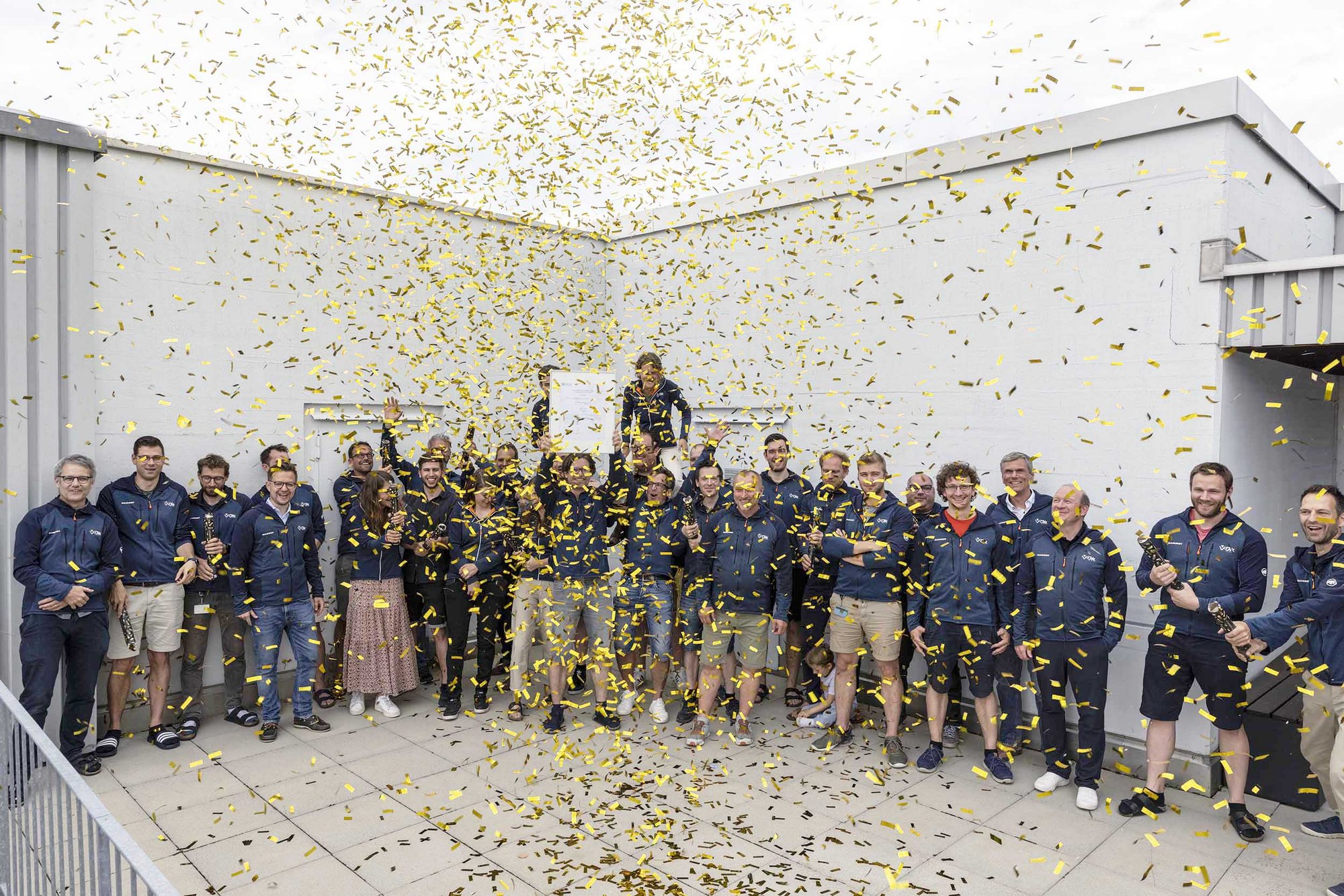Loft Dynamics and Airbus Helicopters cooperate and qualify under EASA regulations the world’s first H125 Virtual Reality Flight Training Device Level 3

New heights in helicopter training
“Loft Dynamics has further enhanced its innovative VR technology that was first qualified in 2021 for a different aircraft. Backed by Airbus Helicopters’ expertise, the newly qualified H125 simulator meets FTD Level 3 requirements and achieves a very high representativity level. An in-house developed electrically driven high-dynamic motion platform and our full replica cockpit layout in combination with the Loft Dynamics pose-tracking system, allow the pilot to operate the helicopter like real. The VR system with 3D vision and high-resolution sceneries rounds up the full- body immersion. A novelty is the common tablet with stored checklists and other documents which is fully integrated in the virtual world. This allows the pilot to operate a real tablet in VR for the first time ever,” says Fabi Riesen, CEO of Loft Dynamics.
A collaboration between regulator and industry to enhance flight safety
Francesco Gaetani, Acting Head of Air Crew & Medical Department at EASA says: “The H125 FTD approval represents a milestone for the use for virtual reality in devices from FNPTs to FTDs. EASA has carefully investigated the capabilities and effects of this combination of VR and motion systems for helicopter training. EASA is confident that such types of new technologies will bring added value to training organisations in terms of cost and flight safety. As these devices are utilising new technologies not foreseen in existing regulatory requirements, special conditions for the approval had to be developed, ensuring an equivalent level of safety. During this process, EASA and the industry effectively collaborated to establish a sound qualification basis for the H125 FTD.”

Francesco Gaetani
Acting Head of Air Crew & Medical Department at EASA
David Solar, Head of General Aviation and VTOL department at EASA, emphasises: “The EASA and Rotorcraft Industry commitment and objective back in 2018 when endorsing the Rotorcraft Safety roadmap was to have visible and concrete results within five years. The Loft Dynamics H125 FTD qualification is one of the tangible outcomes of the Rotorcraft Safety Roadmap, paving the way for more affordable and potentially more versatile training devices that can be used for enhancing overall rotorcraft safety. It also shows that collaboration between a regulator and within industry is the best way to get all stakeholders to move forward.”

David Solar
Head of General Aviation and VTOL department at EASA
Airbus Helicopters and Loft Dynamics signed a partnership agreement
Loft Dynamics and Airbus Helicopters signed a commercial partnership agreement during the 2022 Heli Expo in Dallas, Texas, for the commercialization of the simulator. In the frame of this agreement, both companies will cooperate to deploy the device worldwide and identify new areas of development for other helicopters and missions.

Gilles Bruniaux
Head of Product Safety at Airbus Helicopters
“When we first met Loft Dynamics, we instantly recognized the great potential of the simulator and its added value in the training environment. Today with FTD level 3 EASA qualification, a new step has been reached, with simulator hours that will bring credits in training. Such an innovative means will bring so many benefits to our customers by enhancing safety, affordability and flexibility,” says Sabrina Barbera, Head of Training and Flight Ops.

Sabrina Barbera
Head of Training and Flight Ops
Less checking, more training, enhances flight safety
“The H125 training solution allows recurrent programmes to be run more effectively. Today operators execute, as per regulation, manoeuvre-based proficiency checks mostly on real helicopters. With this simulator, pilots can learn more purposefully in scenario-based trainings completely without carbon emissions. The device is approved for proficiency checks, type ratings according to EASA part FCL, and parts of an instrument rating. With this technology, Evidence Based Training (EBT) concepts can be implemented,” Fabi Riesen comments.

Fabi Riesen
Founder & CEO Loft Dynamics


